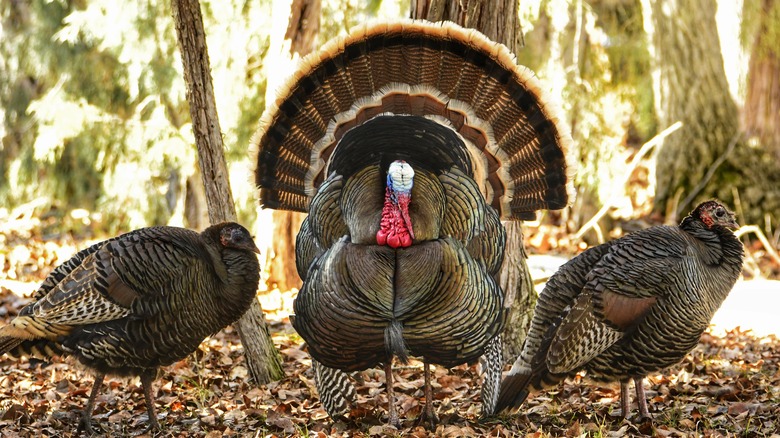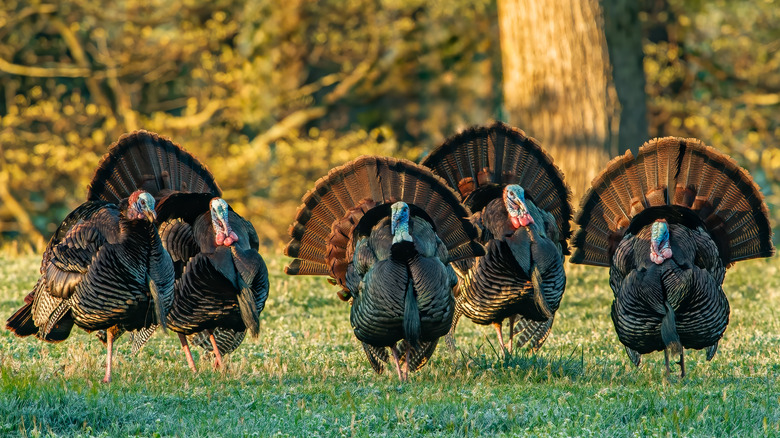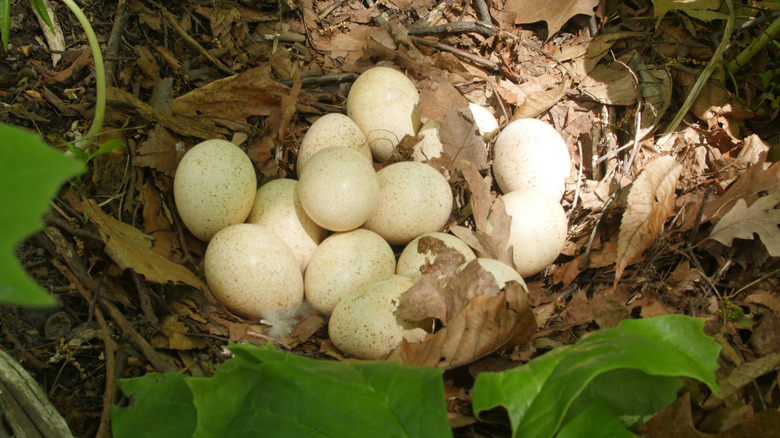How Does A Turkey Reproduce?
You might not think about turkeys until Thanksgiving Day comes around, but these game birds are pretty interesting. For instance, their process of mating and reproducing is intriguing considering they spend most of the year in separate male and female flocks. Before getting into that, though, it can be helpful to understand a few turkey terms and characteristics.
Young males are called jakes, adult males are called toms, and the females are called hens. You can tell the difference between male and female turkeys by their physical characteristics: The toms are larger and (during spring) generally have white, blue, and red heads on black bodies with more iridescent feathers, while the hens are smaller and usually have blue-gray heads with light-brown to brown bodies. These are important characteristics to tell a hen from a jake because they can appear to be about the same size.
Interestingly, the life expectancy for toms is four years, while the life expectancy for hens is three years. Turkeys are more likely to reach this life expectancy when they have access to an ideal brood range — an area with plenty of resources for the hens and poults (turkey babies) to thrive. As a result, the birds are healthier to reproduce and build a strong population.
The process of turkey mating
While hens and poults flock together from summer through winter, the young jakes begin to separate into flocks of their own around late fall. Then, the turkey breeding process starts with the separated flocks remerging as winter comes to an end. The birds form large groups as the hens are attracted to the toms' mating behaviors — typically starting in March in the South and April to early May in northern regions, which is mostly driven by the days getting longer and the turkeys' hormones responding.
How birds reproduce is already unique, and breeding behaviors among turkeys is more flamboyant than some. In a turkey mating flock, a tom or two may display with a dominant tom and help fight other toms. They use vocalizations that can carry for 1 mile, drumming and booming, and strutting, which involves tail fanning and wing dragging. Additionally, the toms' heads turn shades of white, blue, and red, with the most excited turkeys turning white. Hens typically select older, dominant toms for mating and crouch to signal when they are ready for breeding. One dominant tom in a mating flock will breed with several hens, and each hen can efficiently store the semen and sperm to fertilize a full egg clutch, which can be up to 17 eggs large.
However, mating isn't always necessary for hens to reproduce because they're capable of parthenogenesis, which is taken from Greek words that translate to "virgin origin" and is a form of asexual reproduction. Several factors are at play when this happens, including food and temperature changes, hormonal shifts, and infections.
The nesting and hatching phases of turkey reproduction
After turkeys mate, the hens secretly search for nesting sites alone as their eggs develop. These birds make their nests on the ground, forming shallow depressions in a spot with good cover by scratching. Meanwhile, the toms seek out more breeding companions — turkeys are polygamous — and leave the females to do the rest.
Late spring is the time of year these wild birds lay eggs, although the specific weeks depend on when mating starts. The hens spend the next two weeks laying one egg at a time, 24 to 32 hours apart. On average, a full clutch has 10 to 12 eggs, but it can have fewer or more. The hens feed as much as they can between each egg laid so that they can make it through the full incubation period, which only starts after they lay the final egg, without needing to be away from their nests.
During those 26 to 28 days, the hens move to rotate the eggs about every hour and may only leave for short feeding periods, never going too far from the nests. After incubation, all the eggs hatch within an hour of each other. The hens cluck softly during this process to form imprints on their young, a special form of learning that promotes turkey social development. When the poults emerge, their eyes are open, and they're bodies are covered in fuzzy feathers. They can run around in just 12 to 24 hours. Then, by the end of summer, they can follow their mother hens around in open fields feeding on insects and weed seeds.


